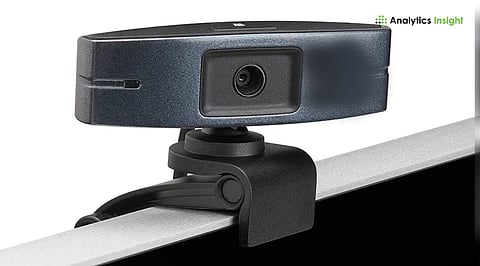

External webcams are plug-and-play, but driver installation may be needed for some advanced models.
Proper positioning, lighting, and software settings can significantly enhance the quality of webcam video and audio.
To ensure your privacy, privacy settings must be enabled for apps to access your webcam safely and efficiently.
Webcams have become one of the most essential devices for video calls, online meetings, streaming, and content creation. Regardless of whether the user has a desktop PC or a laptop, setting up a webcam is usually a simple process. This guide will walk you through the process.
Before installation, please verify that you have a webcam that is compatible with your computer. If you are using an external webcam, consider the specifications, such as resolution (1080p or higher), frame rate, and technical advantages, like whether it has a microphone or autofocus capabilities.
An external USB webcam will plug into one of the free USB ports located on your PC/laptop. A USB webcam with a clip should be securely attached to the top of the monitor or laptop screen.
Many webcams are plug-and-play, meaning your operating system will automatically recognize the device and install necessary drivers. On Windows 10 and 11, for example, it normally detects any webcam instantly.
However, a few models may require drivers to be installed from the website or provided on a CD. Follow the installation instructions to use the device properly.
After installation, review the settings related to your system's privacy. On Windows, go to Settings > Privacy > Camera and enable access for the desired apps. On macOS: Go to System Preferences > Security & Privacy > Camera.
Select the checkbox next to an app to allow it to access the camera. These settings block unauthorized access while ensuring your webcam functions correctly.
Once connected, verify that your webcam is functioning correctly. You can do this via the camera app on your device or through any video conferencing software, such as Zoom, Microsoft Teams, or Skype.
A live preview of your video should be visible to you. Adjust the angle, height, and lighting to achieve the best image quality. If your webcam has a microphone, ensure it is functioning correctly as well.
Most webcams are bundled with software that allows for adjustments to resolution, brightness, contrast, and frame rate. Follow the settings there that best fit a call or streaming experience. Additionally, positioning the webcam at eye level and utilizing soft, natural light will enhance the video quality.
If the webcam does not work, disconnect it and reconnect it to your laptop or pc there could be a loose or faulty connection. You can look to update any relevant drivers and reboot your laptop/PC to have it reconnect, which sometimes is necessary. If the camera still does not work after this step, please visit your manufacturer's support page for assistance.
Also Read: Best Webcams for Mac Users in 2025
Setting up and connecting a webcam is usually a simple process, whether for professional meetings, online classes, or personal use. With the right setup, proper adjustments, and attention to software settings, you can achieve high-quality video and audio for a seamless digital experience.
How do I connect a USB webcam to my PC or laptop?
Simply plug the USB cable into an available port. Most webcams are plug-and-play, meaning Windows or macOS automatically recognizes them without the need for extra drivers.
Is special software required to use my webcam?
Not typically. Most webcams work with built-in camera apps or video conferencing tools; however, some models include software that allows users to adjust settings such as brightness and resolution.
Why doesn't my computer detect my webcam?
Check the USB connections, update the drivers, and make sure your OS supports it. Most detection issues are resolved by either restarting the PC or reinstalling the drivers.
Can I use a laptop's built-in webcam for streaming or meetings?
Yes, they are. Built-in webcams are ready for video calls and streaming. Ensure that your privacy settings permit app access and that the lighting is sufficient to capture clear video.
How to Improve Webcam Video and Audio Quality?
Set it at eye level, use soft lighting, and adjust settings in webcam software. An external microphone dramatically improves sound quality.
